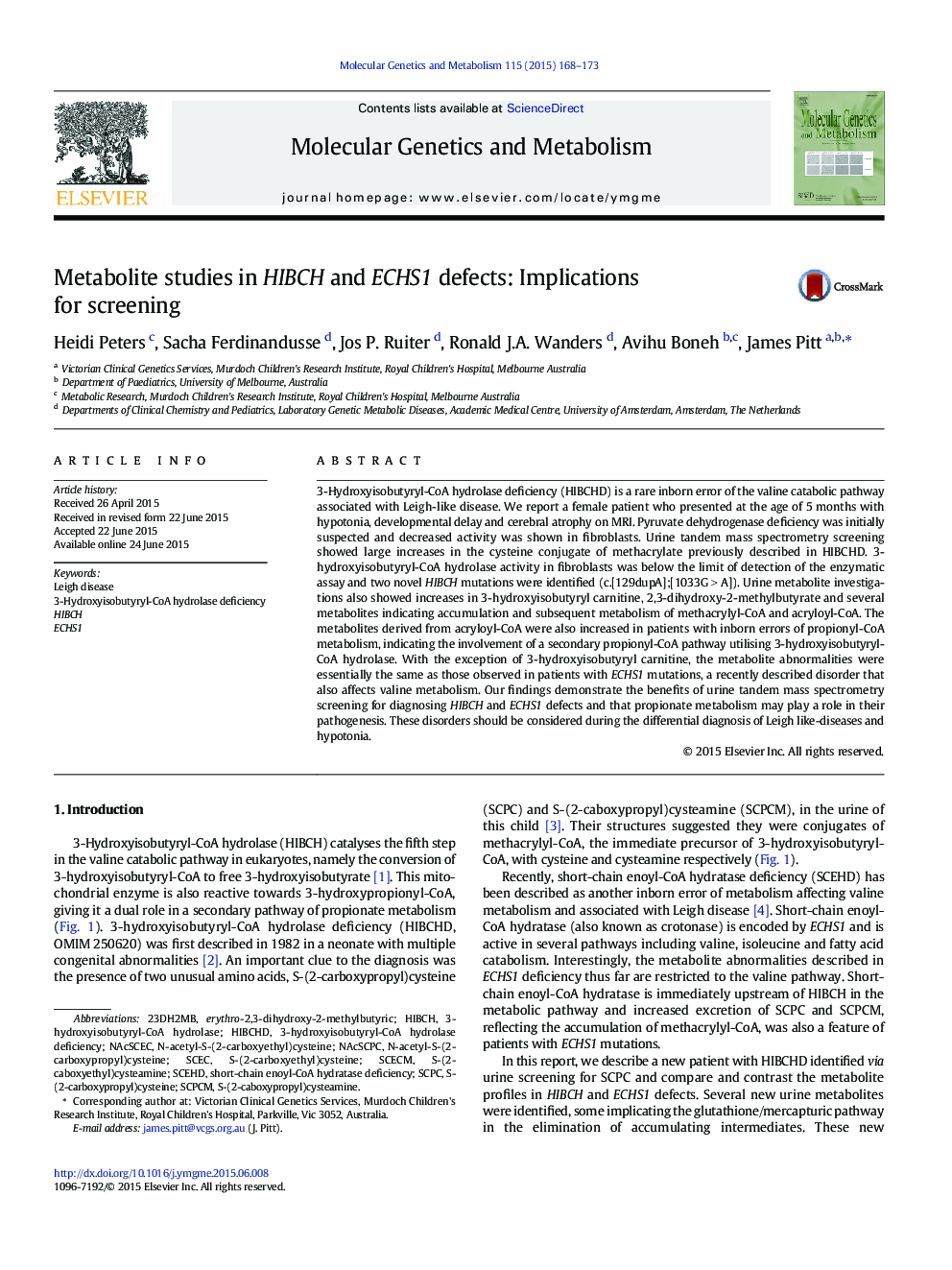| Article ID | Journal | Published Year | Pages | File Type |
|---|---|---|---|---|
| 1998253 | Molecular Genetics and Metabolism | 2015 | 6 Pages |
Abstract
3-Hydroxyisobutyryl-CoA hydrolase deficiency (HIBCHD) is a rare inborn error of the valine catabolic pathway associated with Leigh-like disease. We report a female patient who presented at the age of 5Â months with hypotonia, developmental delay and cerebral atrophy on MRI. Pyruvate dehydrogenase deficiency was initially suspected and decreased activity was shown in fibroblasts. Urine tandem mass spectrometry screening showed large increases in the cysteine conjugate of methacrylate previously described in HIBCHD. 3-hydroxyisobutyryl-CoA hydrolase activity in fibroblasts was below the limit of detection of the enzymatic assay and two novel HIBCH mutations were identified (c.[129dupA];[1033GÂ >Â A]). Urine metabolite investigations also showed increases in 3-hydroxyisobutyryl carnitine, 2,3-dihydroxy-2-methylbutyrate and several metabolites indicating accumulation and subsequent metabolism of methacrylyl-CoA and acryloyl-CoA. The metabolites derived from acryloyl-CoA were also increased in patients with inborn errors of propionyl-CoA metabolism, indicating the involvement of a secondary propionyl-CoA pathway utilising 3-hydroxyisobutyryl-CoA hydrolase. With the exception of 3-hydroxyisobutyryl carnitine, the metabolite abnormalities were essentially the same as those observed in patients with ECHS1 mutations, a recently described disorder that also affects valine metabolism. Our findings demonstrate the benefits of urine tandem mass spectrometry screening for diagnosing HIBCH and ECHS1 defects and that propionate metabolism may play a role in their pathogenesis. These disorders should be considered during the differential diagnosis of Leigh like-diseases and hypotonia.
Keywords
Related Topics
Life Sciences
Biochemistry, Genetics and Molecular Biology
Biochemistry
Authors
Heidi Peters, Sacha Ferdinandusse, Jos P. Ruiter, Ronald J.A. Wanders, Avihu Boneh, James Pitt,
